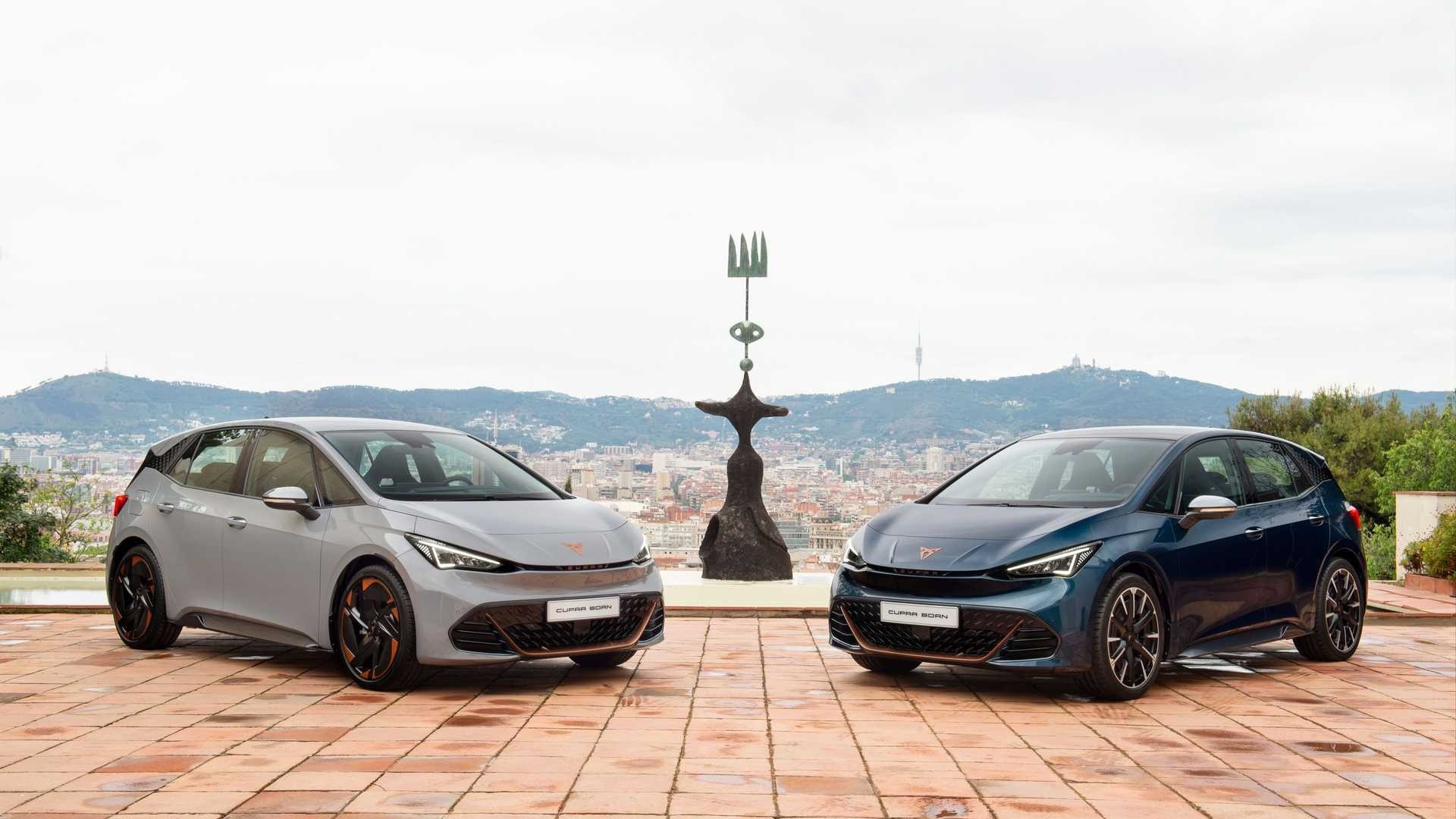Cupra Born Officially Revealed With More Power Than VW ID.3
SEAT's standalone performance brand Cupra is introducing the Born electric hatchback in production guise as a follow-up to last year's concept car...

Cupra Born Officially Revealed With More Power Than VW ID.3
SEAT's standalone performance brand Cupra is introducing the Born electric hatchback in production guise as a follow-up to last year's concept car. A sister model of the Volkswagen ID.3, the compact EV does a fairly good job on the outside of hiding its Wolfsburg roots by adopting a significantly more aggressive design.
The meaner front-end design consists of sharper-looking headlights and large air intakes lending the Cupra Born a sportier look compared to the ID.3. At the back, a wide LED light bar gives the impression of a larger car while the vertical fins are part of an integrated diffuser Cupra mentions plays a functional role as well.
Cupra's first electric vehicle will be available with a choice of six alloy wheel designs varying in size from 18 to 20 inches. The shoes will be equipped with aero elements along with the typical copper inserts also noticeable on the body. The textured C-pillar appears to have a more sophisticated design than the ID.3 with its honeycomb-patterned foil as another effort to separate the two MEB-based cousins. Six paint colors are going to be available at launch.
Step inside and it will look oh-so-familiar at a first glance, but there are some key differences. The all-electric Born uses a larger 12-inch touchscreen (10-inch display for the ID.3) and has sportier seats with integrated headrests, while the steering wheel has a couple of extra buttons reserved for the Cupra version.
Much like the ID.3, the new Born is exclusively a rear-wheel-drive affair. The single electric motor mounted at the back delivers 148 horsepower (110 kilowatts) and 310 Newton-meters (229 pound-feet) of torque in the base model to mirror the ID.3 Pure Performance version. It uses the same 45-kWh battery pack with an estimated 211 miles (340 kilometers) of WLTP range and does 0 to 62 mph (100 km/h) in 8.9 seconds.
Step up to a beefier version with 201 hp (like the ID.3 Pro Performance) and you'll also get a larger 58-kWh battery. Torque stays the same at 310 Nm (229 lb-ft), but the added horsepower enables a sprint in 7.3 seconds while the upgraded battery has enough juice for 261 miles (420 km).
This is where the technical specifications get more interesting as Cupra will sell the Born with an E-Boost performance package to bump output to 228 hp (170 kW). Unavailable for the ID.3, the extra electric muscle helps the zero-emissions hatchback cover the sprint in 6.6 seconds. The 58-kWh battery offers the same range of 261 miles (420 km) as the version without the E-Boost pack.
The more powerful electric motor can be combined with a larger 77-kWh battery, in which case the range is extended to 336 miles (540 kilometers). On the flip side, the heavier battery has a negative impact on performance, with the sprint taking seven seconds. In other words, those looking for the best performance available will want to combine the E-Boost pack with the 58-kWh battery.
The VW Group has shown the MEB platform supports a dual-motor, AWD hatchback formula as demonstrated in the ID.X, but the 329-horsepower hot hatch remains a concept for the time being. Some 441 pounds (200 kilograms) lighter than a regular ID.3, the one-off creation takes 5.3 seconds to 62 mph (100 km/h), therefore making it 1.3 seconds quicker than the performance-oriented Born Cupra.
The Cupra Born will enter production in September at the VW Group’s Zwickau factory in Germany where the ID.3 has been rolling off the assembly line since November 2019.